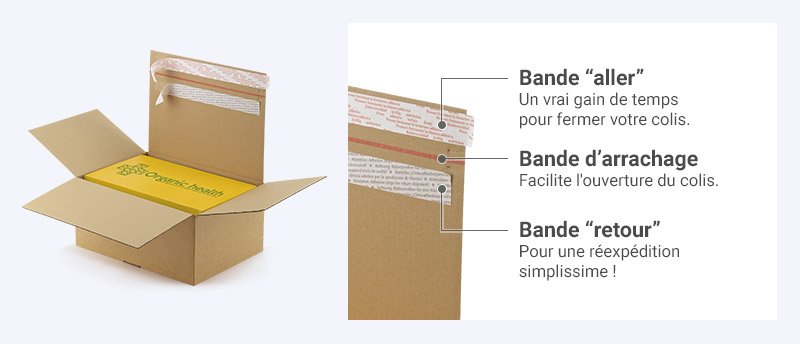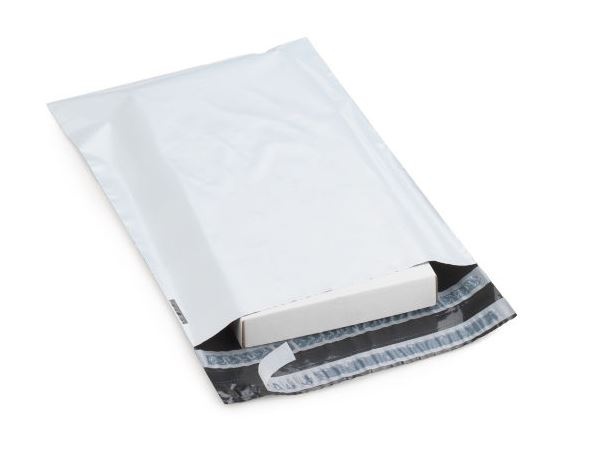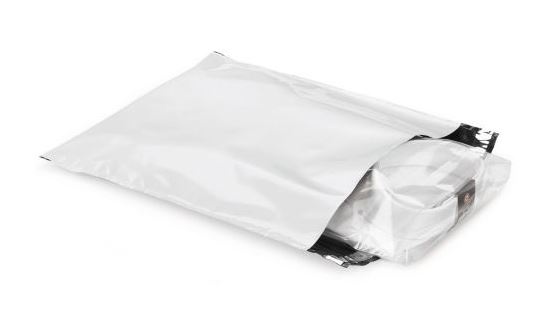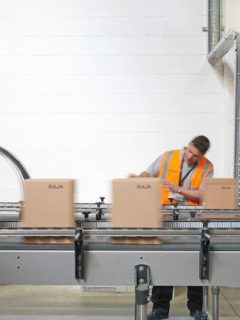What will be the global balance sheet of e-commerce after Christmas and the winter sales? We will wait for the FEVAD balance sheet and the sales results. The most informed among us will also look at the return rate. In BtoC in Europe, return rates already oscillate between 25% and 50% depending on the category! In the United States, post-Christmas returns will reach $90 billion in market value this year. In fact, order returns and sales are growing – unfortunately – in tandem.The aim of this in-depth article is to help you improve your return logistics, which is a legal obligation throughout Europe. To do this, we have asked an expert in reverse logistics and a logistics & transport director of a leading e-commerce site in his field. CONTENTSI. Improve the customer experience when returning an orderreverse logistics: there is no point in fighting a basic trend, it is better to take the subject upstream and improve theexperience of your customers in this strategic moment which will determine whether or not they will come back to buy from youII. optimising your return rate we have selected some expert advice on how to reduce the number of returnsIII. how to calculate the ROI of a proactive returns strategy A few ideas to sound out the field and advice from Eddy Richauvet, expert in return logistics and co-founder of ShopRunBack, the automated returns management solution that has won multiple awards at logistics, e-commerce and innovation fairsIV. the most popular return solutions e-retailers and retailers have selected them as their practices have evolved.
CONTENTSI. Improve the customer experience when returning an orderreverse logistics: there is no point in fighting a basic trend, it is better to take the subject upstream and improve theexperience of your customers in this strategic moment which will determine whether or not they will come back to buy from youII. optimising your return rate we have selected some expert advice on how to reduce the number of returnsIII. how to calculate the ROI of a proactive returns strategy A few ideas to sound out the field and advice from Eddy Richauvet, expert in return logistics and co-founder of ShopRunBack, the automated returns management solution that has won multiple awards at logistics, e-commerce and innovation fairsIV. the most popular return solutions e-retailers and retailers have selected them as their practices have evolved.
Some figures on the habits of Internet users
- More than 60% of Internet users consult the returns policy before buying
- The same number think that free returns are unavoidable (already used to free delivery)
- 90% are inclined to buy from a site that facilitates the return of an order
(sources: FEVAD, ShopRunBack)
Reminder: returns are above all a legal obligation
the consumer has 14 days to return the product to you, so you need to be at least organised to receive these returns. “We generally observe a return rate of 25 to 50% in the BtoC sector,” says Eddy Richauvet, co-founder of ShopRunBack. The volume to be managed will be proportional to the volume of parcels sent out, and even more so during the festive season, which is regularly synonymous with duplicate items and more risky purchases
“We generally observe a return rate of 25 to 50% in the BtoC sector,” says Eddy Richauvet, co-founder of ShopRunBack. The volume to be managed will be proportional to the volume of parcels sent out, and even more so during the festive season, which is regularly synonymous with duplicate items and more risky purchases
I. Improve the customer experience when returning a product
“
Just as logistics has improved (and continues to do so) to offer a frictionless delivery experience, it must offer a smooth and simple experience for returning an order. This is the best way to build buyer loyalty! ” – Benoit Minvielle, e-commerce director of the RAJA Group.
Be pragmatic: you might as well avoid goods coming back to the warehouse damaged. To do this, avoid the buyer sending the goods back in improvised packaging that does not provide sufficient protection. Here are a few pieces of advice to follow
1. Adopt packaging that is strong enough to withstand a return trip
it is no secret that the structural increase in returns is one of the reasons for the growth in sales of reinforced single-wall and double-wall cartons observed by the RAJA Group throughout Europe
2. Test “return order” packaging
as cardboard is not everything, a poorly sealed package with old or poor quality adhesive is unlikely to be returned to you intact. Return packaging with double adhesive tape allows the consumer to use the same packaging to send the package back. In
the same way that we offer solutions to make it easier to open the package (e.g. a tear strip), we recommend that e-retailers test packaging that facilitates returns,” says Etane Derhy, Key Account Manager Europe at the RAJA Group.
Alternatively, Mango.com sends its orders in a box. Inside, a pocket is systematically inserted in anticipation of a possible return.

II. how to reduce the return rate
puisque l’on ne peut n’y toucher le produit, n’y l’essayer, nous achetons en ligne de manière plus ou moins hasardeuse. Dans le BtoC, les taux de retour varient de 25% à 50% en fonction des catégories. Comment adresser ce phénomène ? Voici quelques suggestions d’experts.
1. Réduisez la livraison de colis abimés
C’est souvent la première cause de retour et d’insatisfaction des internautes. Soyez attentifs aux plaintes de vos clients et protéger correctement vos produits avec le bon emballage.
2. Comment réduire les problèmes concernant la taille
Cest l’une des raisons majeures de retour dans le textile ! Start-ups et grands groupes se penchent sur cette problématique afin de proposer la fit technology qui permettra aux internautes de déterminer la taille qui convient dès la première commande. “Nous avons adopté la solution Fittizzy qui a eu un impact positif sur nos retours” note Christophe Leroy, directeur logistique et transport de Motoblouz.com. La
3. Align perceived quality with product quality
another reason often cited by dissatisfied customers is the difference in quality between the perceived online quality and the actual quality of the product. Excluding any idea of deceiving the customer, it is therefore necessary to favour high definition images and videos in order to give the best overview before ordering. Disappointment and the feeling of having been deceived are two reasons for preferring a competitor the next time
4. Improve the user experience on your mobile site
mobile shopping generates more returns than desktop shopping, and a poor mobile user experience is partly responsible for these returns
5. Identify and weed out serial returners
this American term refers to consumers who buy to try, or even use, the product before returning it. They are considered to have no intention of buying. These fraudsters are a growing phenomenon according to the US National Retail Federation
III. how to calculate the profitability of your return logistics?
Survey the sector and your customers
we can cite the brands that have made this a lever for winning over customers and building loyalty: Amazon, of course, but also the ASOS brand, which without leaving Great Britain, has taken significant market share in continental Europe by proposing a simple and effective returns policy.But beyond a hunch or an instinct, how can we calculate the profitability of a proactive returns policy?
 Also read: ” A proactive returns strategy is a gamble! ” Christophe Leroy, logistics and e-commerce transport director at Motoblouz.com, gives his advice and thoughts on how to set up or improve your returns policy.
Also read: ” A proactive returns strategy is a gamble! ” Christophe Leroy, logistics and e-commerce transport director at Motoblouz.com, gives his advice and thoughts on how to set up or improve your returns policy.
- Competitive benchmark: are your direct competitors better? And if so, don’t hesitate to order and experience the customer journey when requesting a return.
- Survey of a representative panel of your customers: ask them about decisive criteria. What return time would be decisive? Are they ready to participate in the return for certain categories of product? Which return methods do they prefer: Post Office, Relay or shop, home collection? And how much are they ready to pay for home collection?
- A/B Test: if you have an e-commerce site with sufficient traffic, you can check the attractiveness of your new return policy: does a “free X days return” mention under the Checkout button (or elsewhere) improve your conversion rate?
Eddy Richauvet’s advice
the ROI of a returns policy is measured according to several factors and associated costs
- Customer satisfaction: the implementation of a proactive – or customer-friendly– policy means
- A return acceptance period that is better than the legal 14 days,
- the merchant should pay the return shipping costs,
- the choice of how the return order is handled: parcel relay, post office, consignment..
- instant or short refund periods
- The reduction in indirect costsreduced indirect costs, such as the rate of contact with customer service linked to requests/follow-ups
- Increase in overall revenue: the e-retailers we support have found that the implementation of a proactive returns policy is accompanied by an increase in the number of sales – in the end it is their net income that benefits.
to conclude, the ROI of a return logistics is part of a global approach. The aggressiveness of the return policy, its customer friendly side must be associated with a real marketing effort (communication, PR, call to action) – without neglecting of course the quality of the post-purchase experience.
IV. The return solutions most favoured by RAJA customers
Whatis a “return” packaging?A video is often better than 1000 words, here is a demonstration in less than 60 seconds
whether crate, box or envelope, a returnable package always consists of an adhesive strip for shipping, a second adhesive strip for returns, and a tear strip in the centre (easy opening) a classic for e-commerce and retail: crates and return boxes
a classic for e-commerce and retail: crates and return boxes The return packaging: the opaque, waterproof and tear-proof envelope!
The return packaging: the opaque, waterproof and tear-proof envelope! an alternative isthe simple opaque envelope inserted in the boxes with an explanatory flyer (a solution adopted by Mango.com among others). Less expensive than a return envelope and can be inserted in orders above a certain amount
an alternative isthe simple opaque envelope inserted in the boxes with an explanatory flyer (a solution adopted by Mango.com among others). Less expensive than a return envelope and can be inserted in orders above a certain amount
About the experts
Eddy Richauvet is the co-founder of ShopRunBack, a Saas solution for managing returns orders. They managed 1 million return parcels throughout Europe in 2017. The start-up, which has successively joined the Galeries Lafayettes and Cdiscount accelerators, has already won two awards at logistics (SITL) and e-commerce/retail (Paris Retail Week) trade fairs.Christophe Leroy was the logistics and transport director of Motoblouz.com, the French leader in motorbike and scooter equipment on the Internet (around 400,000 units shipped in 2017). He has just joined the logistics consultancy Suppleo.















